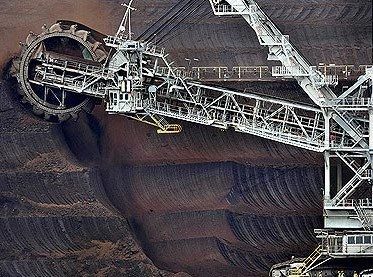Last Friday, the Victorian and federal governments announced a $90 million fund to develop brown coal processing technology in the Latrobe Valley.
The fund is called the Advanced Lignite Demonstration Program (ALDP) and, according to the brochure, its main goal is the “development of low-emission coal products for export”.
Media coverage of the announcement so far has focused on two predictable points of view: that the program will either shore up the “long-term viable future for the Latrobe Valley based on the sustainable use of brown coal”, or alternatively, it will “waste time in the fight against climate change”.
To date, however, no one seems to have pointed out that there are two simple reasons why Victoria will never export coal in bulk.
Firstly, Victorian brown coal is of lower quality than any coal offered on world markets.
Secondly, Victoria is the worst place in the entire Asian region from which to export coal, except maybe Tasmania.
Straight out of the ground, Latrobe Valley coal has a moisture content that exceeds 60% and an energy rating of under 9 megajoules per tonne (2,150kcal/kg). By way of comparison, the moisture content of NSW benchmark Newcastle coal is around 2% and its energy rating exceeds 28 megajoules per tonne (6,700kcal/kg).
Worse still, when Latrobe Valley coal is dried it is volatile and tends to explode. There just is no market for coal of such low grade and high volatility, other than the power stations located next to the mines.
So if we’re going to export it, we first have to turn it into something there is a market for. That’s where ALDP and the $90 million come in. The plan is to develop technology to turn our coal into something we can sell. But any technology that is sophisticated enough to do this must add significantly to the cost of putting a tonne of our product onto a ship. Our competitors don’t have this cost.
Even if we could magically make it cost-free to turn Latrobe Valley coal into something as “good” as, say, Indonesian sub-bituminous coal (which has a moisture content of 24 per cent and an energy rating of 20 megajoules per tonne (4,780kcal/kg)), the companies that develop this technology will presumably deploy it in Indonesia (or South Africa, or Russia, or Mongolia, or Queensland) as well.
Reducing our comparative disadvantage in coal quality is therefore contingent upon the technology being developed strictly to suit our coal in particular, in a way that could not be transferred to competitors. But the program is open to multi-national companies and there is no indication that the intellectual property could be made to stay in Victoria.
With our coal magically transformed into a similar product to those of other producers, we would next have to overcome our disadvantageous location.
Transport costs routinely account for over half the delivered price of coal. Because of high transport costs, the world seaborne coal market is split into two segments – the Pacific Basin and the Atlantic Basin. Victoria is clearly limited to the Pacific Basin and its major markets in Japan, Korea, Taiwan, China and India. Victoria is further from these markets than all of our competitors and therefore faces the highest transport costs.
The ALDP brochure enthusiastically proclaims that Latrobe Valley lignite could be turned into liquid fuels, gas or fertilisers. However, all these commodities face similar problems: existing supplies are relatively cheap, local markets are small, and transport costs are expensive. Processing in Australia might reduce shipping volumes and transport costs, but will likely incur a carbon cost.
In 1899, the Great Morwell Coal Mining Company went broke due to competition from higher quality NSW coal. Ever since, Latrobe Valley coal has been used for little else except local power generation. In 2002, the Victorian government tried again to entice developers with coal allocations, but 10 years later none of the winning projects have become operational.
Exporting Latrobe Valley coal will never be viable unless world prices reach, and remain at, levels high enough to offset our processing costs and extra shipping costs. Because other suppliers do not incur these costs, Victoria will always be the most marginal producer in the market.
In 1776 the founder of economics, Adam Smith, wrote that “the value of a coal-mine to the proprietor frequently depends as much upon its situation as upon its fertility.” Our coal mines are not situated well for export, nor are they fertile in terms of quality. Federal and state governments are ignoring the lessons of both economics and history in funding the ALDP.
Roderick Campbell is an associate economist with Economists at Large








